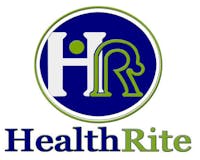According to statistics, as many as 80% of US adults experience lower back pain at some point in their lives. Other than that, it’s also one of the leading causes of disabilities around the world. According to a survey, one of the most common reasons why most people are usually absent from work is because of lower back pain.
Just like other neuromuscular disorders, the most common causes of lower back pain are strains, sprains, muscle overuse, and injuries. In rare cases, the pain can also be a result of infections and tumors.
The intensity of the condition can be elevated if certain risk factors like age, pregnancy, genetics, and mental health factors exist.
How is lower back pain categorized?
This pain can either be categorized as acute or chronic, depending on the exact condition of the patient. For some, it persists for a long period, while for others, it may be described as a sudden, sharp, and piercing sensation.
Acute pain goes away after a few weeks due to self care treatments like massage, rest, and compression. On the flip side, if the pain is of a chronic nature, you might want to see a physical therapist!

Physical therapy: Does it really work?
Your physical therapist does carries out certain exercises that help you strengthen the muscles that directly or indirectly support the lower back. These exercises are carried out with the help of professionals who adopt a tailor-made approach to meet the specific requirements of the patient’s condition.
Therapists suggest that you should immediately seek professional treatment because too much bed rest may worsen the condition. These exercises are carried out regularly at equal intervals for maximum benefit. You’d be surprised to know that physical therapy may also be used in addition to surgeries. This reduces the total recovery time for the patient.
The exercises carried out by the therapists specifically focus on stretching the muscles, dynamic stabilization, and lumbar traction. In lumbar traction, the focus is to de-stress the lumbar spine. The disc space is unloaded and as a result, the muscle is made to relax. This helps it heal on its own.
Whether you’re in search of some of the most dependable physical therapist or occupational therapists, get in touch with us. At HealthRite, our professionals cater to a number of neuromuscular ailments including lower back pain, chronic pain, and knee injuries, Contact us now.

